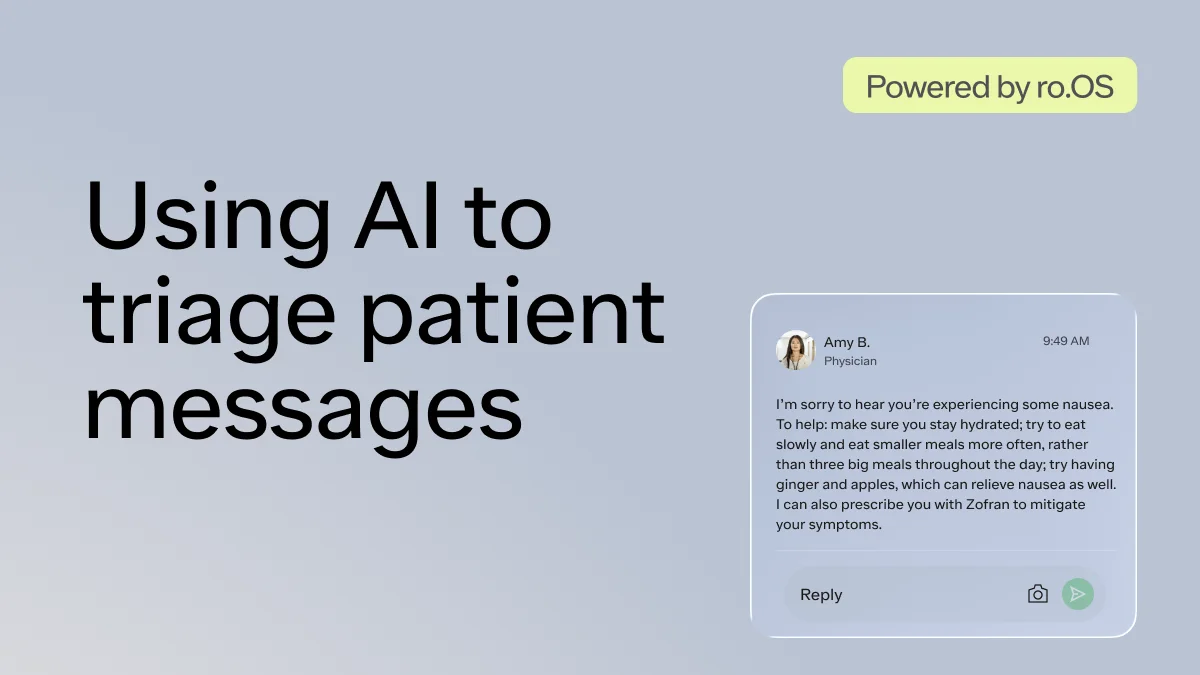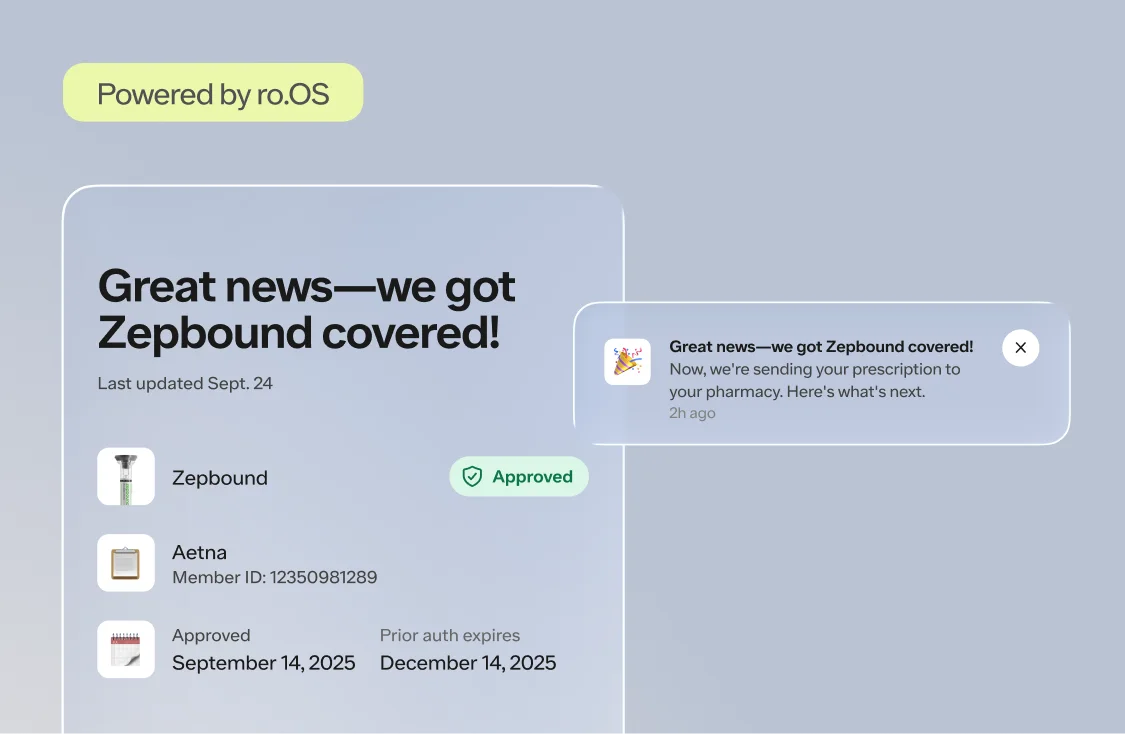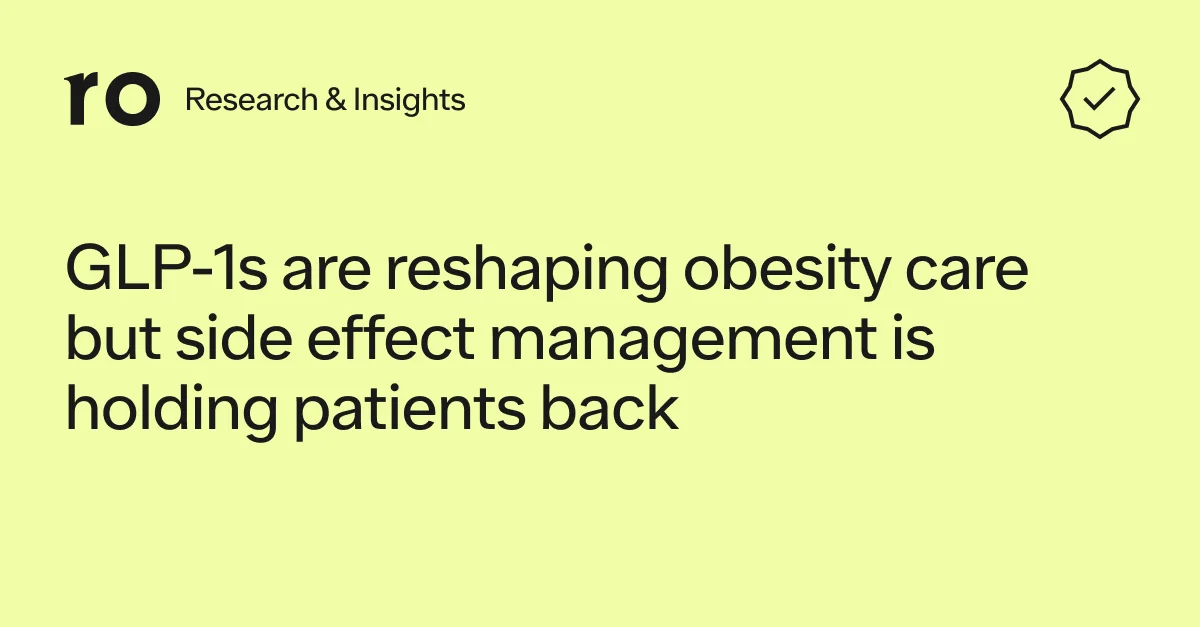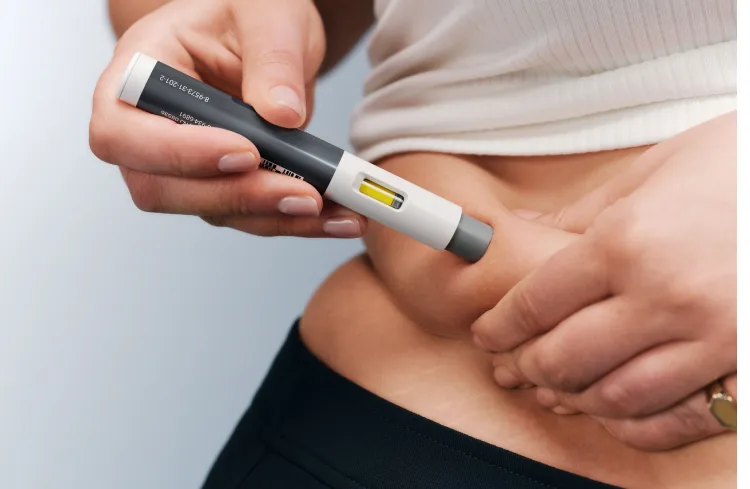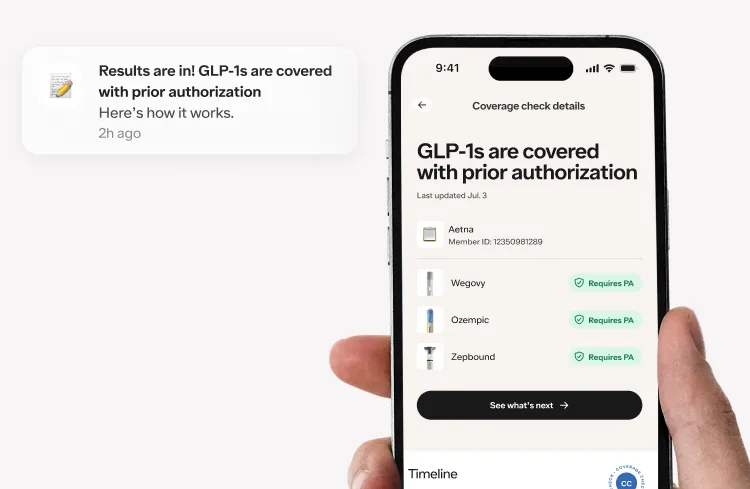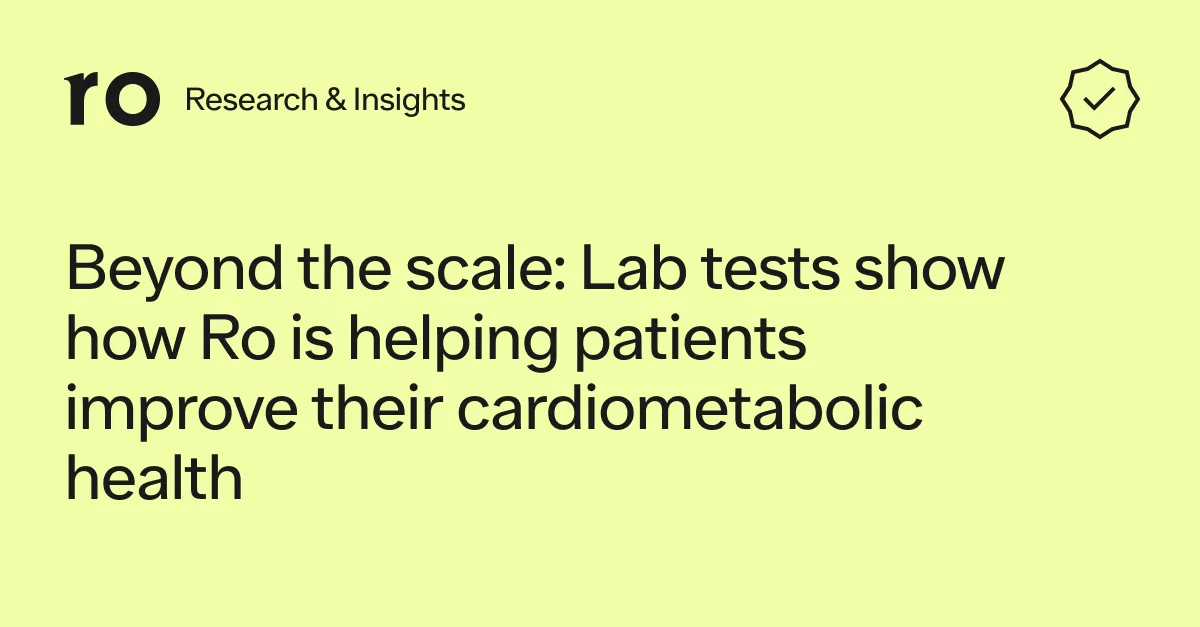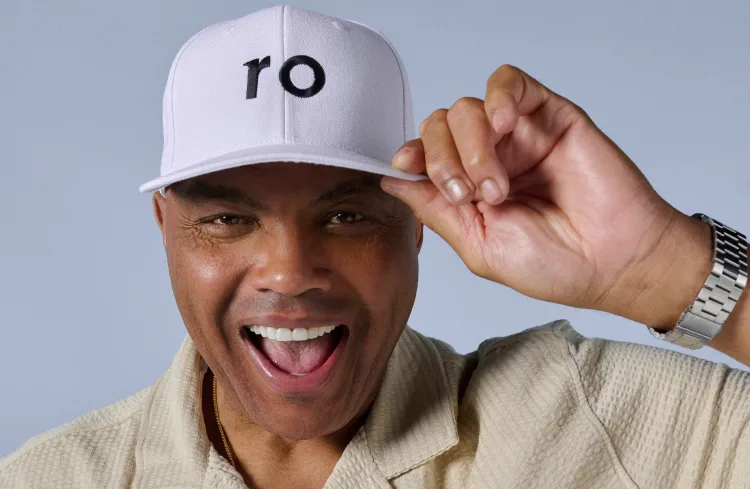
Ro’s vision is to build a patient-centric healthcare system. An integral part of building this is listening to our patients — hearing directly from them what it is they want and need to reach their healthcare goals. Following what we heard from patients in Ro’s inaugural Patient Experience Report in 2021, we spoke again with our patients to better understand their perspectives on healthcare, motivations for using telehealth, and their experiences with Ro to date. Check out some of the top things we learned below.

Improving access to care is the first step toward helping more patients achieve their goals. Ro’s platform uses technology to enable more convenient access to high-quality care by removing barriers that have long limited patients, including high costs, long commutes to a doctor’s office or pharmacy, limited hours, provider shortages, care deserts, and more. In the survey, our patients indicated that ease of access is an important factor in how they perceive their healthcare experience and in selecting whether to seek care in-person or via telehealth.
43% of patients said they would not have sought treatment for their condition if it was not for Ro

“Ro, compared to in-person, is faster, more streamlined, and friendly. It’s less of a hassle as well. Plus it’s super friendly and made me much more comfortable than the in-person process does.” — Ro Patient
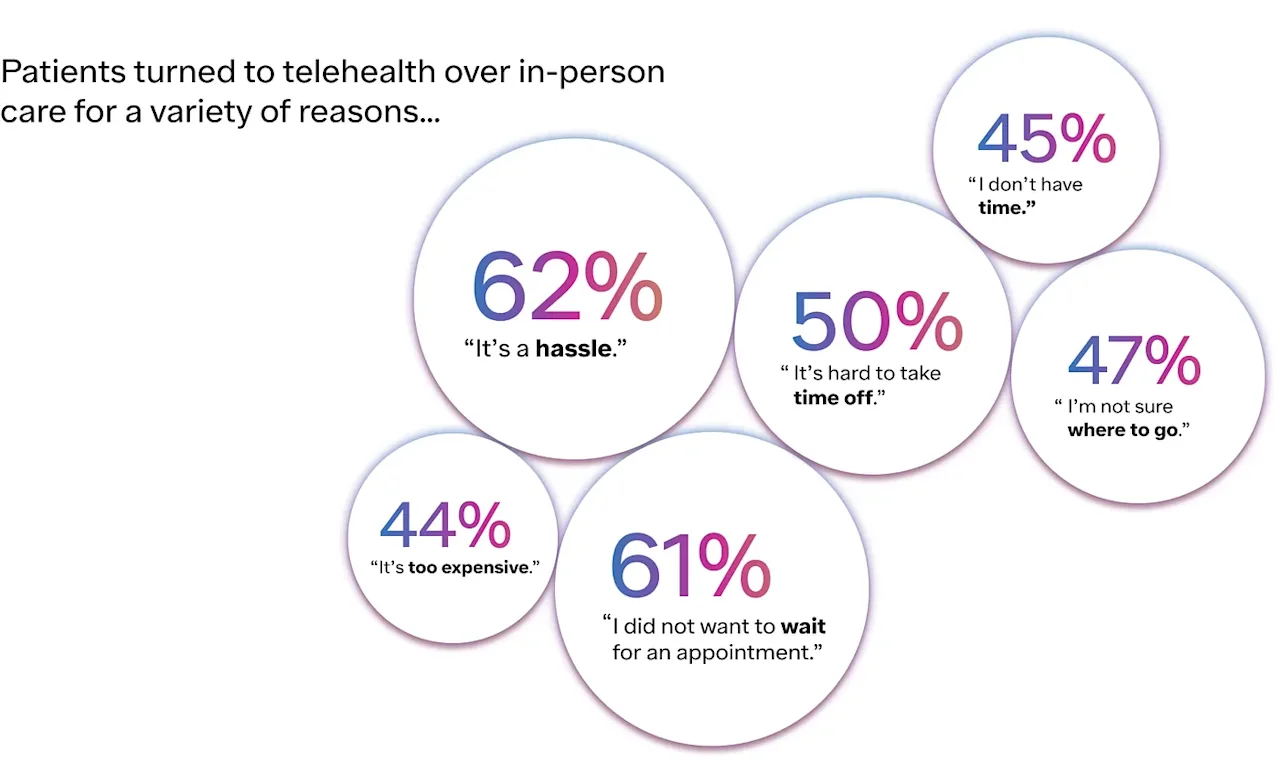
“We are proud to meet patients wherever they are in their healthcare journey, whether they’re addressing something new or finally taking action toward a long time goal — like having a child or losing weight or better sex. Patients can receive quality care across the Ro platform from their phone or computer, without ever leaving the comfort of home. In addition to clinical quality and effectiveness, accessibility and convenience are important because they’re critical factors in patients staying motivated to engage in their health and treatment. In fact, nearly half of our patients reported seeking treatment for their condition for the first time through Ro.” — Zachariah Reitano, Co-founder and Chief Executive Officer

Patients often do not know how much their healthcare is going to cost. From determining whether a provider is in-network, to calculating contributions to a deductible, and figuring out what a copay or coinsurance payment will be — it’s all too opaque and complex. This reality leads some to delay or avoid care and others to face surprise bills — ultimately, contributing to poorer outcomes and continued healthcare inequalities. Ro’s direct-to-patient model offers patients price transparency throughout their experience — and we are continually innovating to offer more affordable, high-quality options for treatment and care.
90% of patients said it was important to them that Ro was transparent about the cost of care.
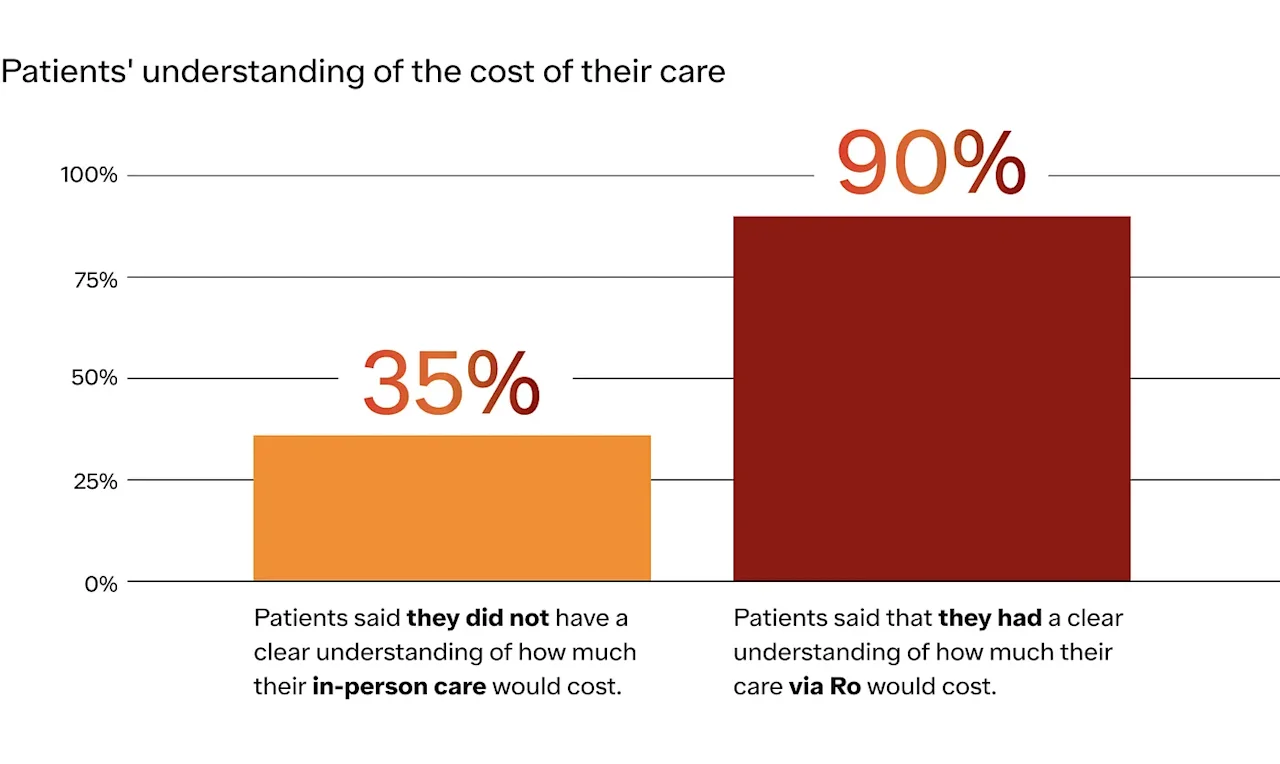
“The process is so simple, transparent and quick. The product works and it is so much easier than working with my primary care physician.” — Ro Patient

“While COVID-19 motivated some patients (27%) to seek care via telehealth rather than in-person, overall, our patients reported being motivated by price transparency and affordability. These are problems that existed long before the pandemic. Price should not stand between patients and their healthcare goals — which is why our offerings, such as our Modern Fertility Hormone Test, are available at a fraction of the cost of traditional in-person options.” — Dr. Melynda Barnes, Chief Medical Officer

Patients come to Ro for help with their specific healthcare goals — whether it’s to understand their fertility, lose weight, or have well aging skin. We not only aim to help them effectively achieve those goals, but also to create the best possible experience while doing so. Ro takes an iterative approach to building our platform and we are continually evolving it to deliver the most seamless experience based on what our patients want and need. Whether we’re rolling out a new care offering or making adjustments to an Online Visit, we will stay focused on offering patients an easy, quick, and personalized experience online or in our app.
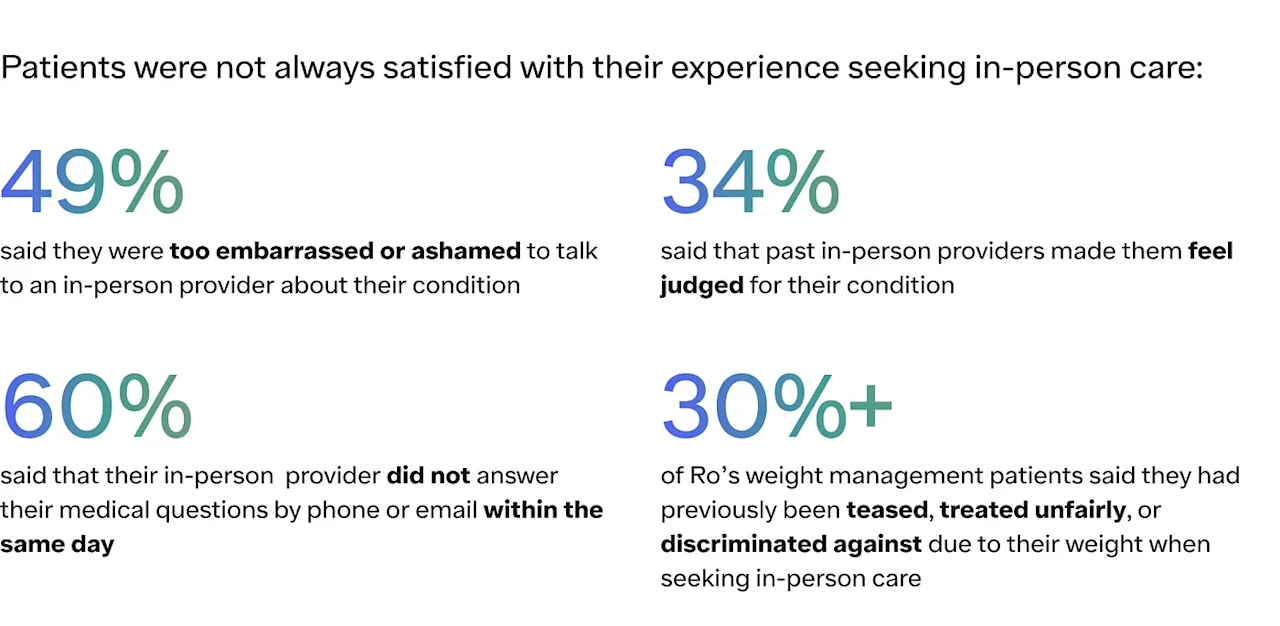

“Honestly this service is the best thing that ever happened to men’s health. It’s private, secure, and affordable. The doctors are professional and truly want to help you. No more waiting in lines for the medications and waiting to be seen. No embarrassing moments at the pharmacy counter or doctor’s office.” — Ro Patient
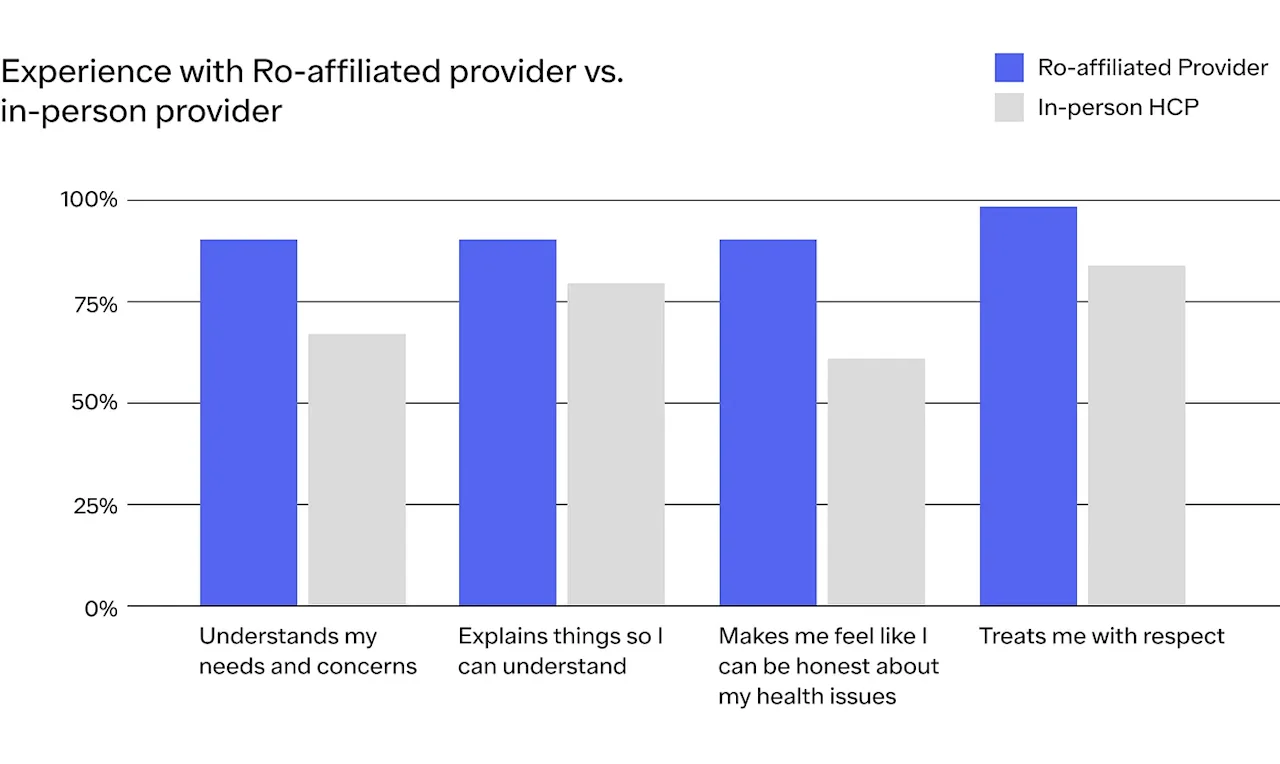
“Each patient values different things in their healthcare journey. Some prioritize the greatest privacy, while others value the soonest available appointment, and still others the easiest communication with providers. For instance, when introducing our weight management offering, we knew that many patients feared the stigma associated with or had poor experiences, including discrimination, seeking in-person care. As a result, we built our Plenity offering to offer privacy, ongoing support, and educational resources to help patients better achieve their weight loss goals.” — Saman Rahmanian, Co-founder and Chief Product Officer

In every part of their healthcare journeys, it’s essential that patients trust they are receiving high-quality, safe, and effective care. In order for Ro to help as many patients as possible with their healthcare goals, building that trust is where we start. Ro builds technology to empower providers to consistently deliver high-quality care, creates tools to improve and continually monitor safety, and conducts research to discover insights on the results our patients experience.
Nearly 80% of patients would recommend Ro to friends and family
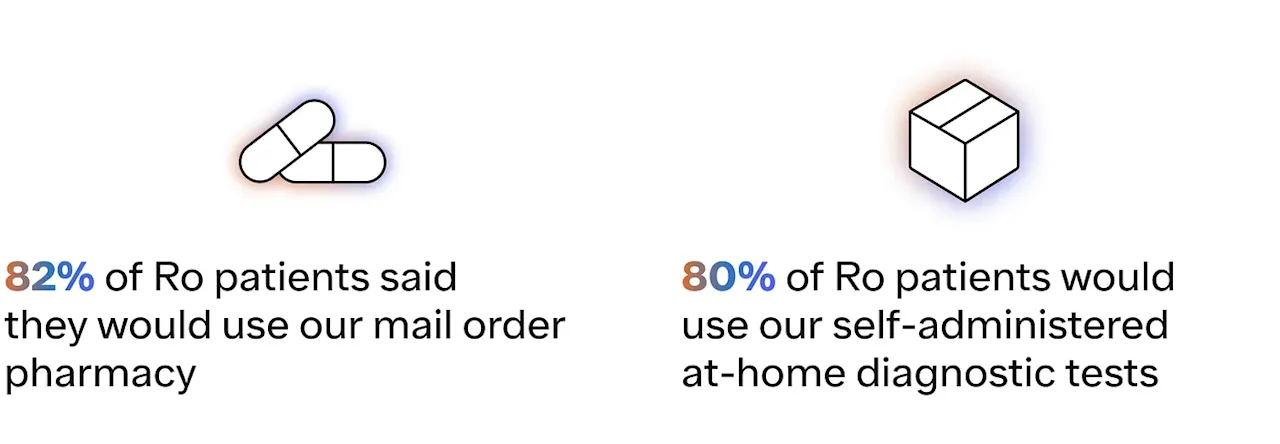
“The process was so easy. I felt safe interacting with the doctor and knowing my needs were reviewed by a medical professional. All from my computer. And the prices are great too!” — Ro Patient
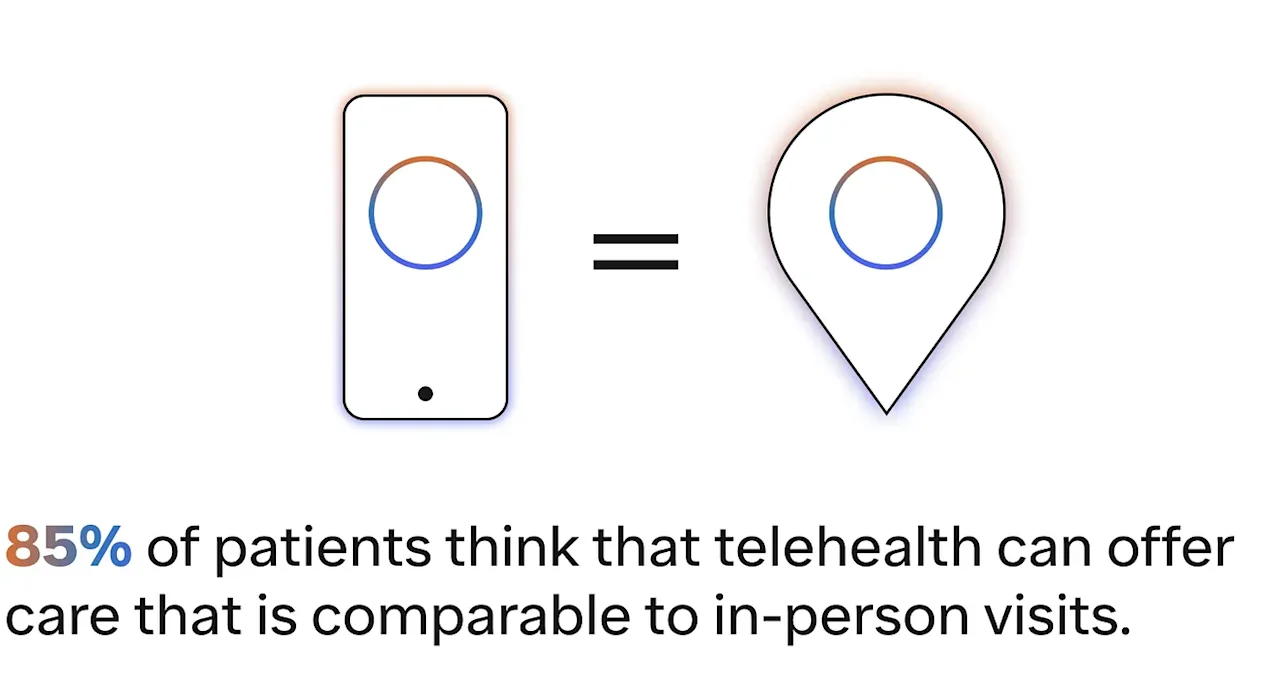
“At Ro, high-quality care means doing the right thing, at the right time, in the right way to achieve the best possible clinical outcomes for each individual. Each patient is unique and we want to meet them where they are to help with their specific goals. For example, our CustomRx treatment is designed to address each patient’s individual skin type and goals. From building new care offerings to analyzing outcomes data, we’re committed to continually holding ourselves accountable to improving quality and safety in all that we do.” — Dr. Tzvi Doron, DO, Chief Clinical Officer
Methodology
Survey methodology overview
The Ro Patient Experience Survey was fielded from December 2021 to April 2022 and includes a random sample of our patients across the U.S. We know that the people that end up responding to surveys tend to be those with more extreme opinions. To reduce the possibility of biasing our results in this way, we kept our sample limited and offered gift cards in exchange for filling out the survey to entice a wide group of patients to provide us with data. Our response rate was about 10%. To hold ourselves to the highest ethical research standards, this survey project was reviewed and approved by the Biomedical Research Alliance of New York’s Institutional Review Board.
Sampling
We applied a simple random sampling approach within each of four conditions treated on Ro’s platform: erectile dysfunction, weight management, cold sores, and genital herpes.
Fielding and response rate
The survey was fielded between December 2021 and April 2022. Patients who were selected via random sampling were emailed a link to the survey and asked to complete it in exchange for a gift card of their choice (e.g. Amazon, Apple, Target). We emailed a total of 1881 patients, of which 191 completed at least one-third of the survey (response rate 10.2%).
Analysis
All analyses for this report were conducted in R version 4.2.0.
Limitations
We believe that it is important to acknowledge that our study has some limitations. While we took precautions to maintain validity throughout the process of sampling patients, fielding our survey, and analyzing results, all surveys are subject to sampling error, response bias, and measurement error. Where possible, we used validated measures; we wrote our own questions when validated measures were not available. Limitations notwithstanding, we believe that our findings were produced with rigor and make a valuable contribution to our understanding of direct-to-patient telehealth patients.
